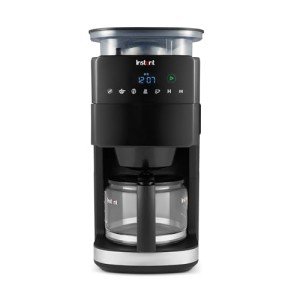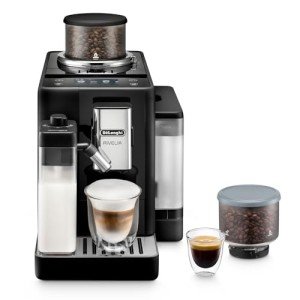Espresso Coffee Machine Online
About Company
The Main Issue With Manual Espresso Machine, And How You Can Fix It
The Art of Coffee Crafting: A Comprehensive Guide to Manual Espresso Machines
Espresso is frequently hailed as the lifeline of coffee culture. For coffee enthusiasts, the best method to delight in this rich, concentrated coffee drink is to utilize a manual espresso machine. Unlike their automatic counterparts, manual espresso machines require a hands-on technique, permitting the barista to have total control over the brewing process. In this post, we will check out the world of manual espresso machines, their functions, how to use them effectively, and ideas on maintaining them for longevity.

What is a Manual Espresso Machine?
A manual espresso machine, often called a lever espresso machine, is a kind of coffee machine that depends on human power to extract espresso. Unlike automated or semi-automated machines, manual machines do not count on electrical elements for brewing. Rather, they use mechanical levers to produce pressure, pushing water through finely ground coffee.
Key Features of Manual Espresso Machines
| Feature | Description |
|---|---|
| Pressure System | Utilizes a lever system to create the required pressure (normally between 9 to 10 bars) for extraction. |
| Boiler Type | Usually uses single or double boilers; some machines have heat exchangers. |
| Sturdiness | Often built with stainless steel and brass for longevity and remarkable heat retention. |
| Personalization | Permits fine-tuning of pressure and water temperature level, resulting in a tailored coffee experience. |
| Knowing Curve | Needs skill to master the developing procedure for optimal extraction. |
Benefits of Using a Manual Espresso Machine
Manual espresso machines have ended up being progressively popular for numerous reasons, providing distinct advantages that interest coffee aficionados:
-
Complete Control: Users have complete control over the brewing procedure, consisting of the grind size, tamping pressure, and extraction time.
-
Quality Aroma and Flavor: With a correct strategy, manual machines can produce exceptional Espresso Coffee Machines, highlighting the coffee’s natural flavors and fragrances.
-
Aesthetic Appeal: Many manual machines are classic or vintage in look, typically crafted from high-quality materials that boost the kitchen area’s aesthetic.
-
Longevity and Maintenance: These machines often last longer than automatic ones due to their easy mechanics and fewer electrical components.
-
Experience and Connection: The manual brewing process welcomes an interesting experience, permitting users to link more totally with their coffee.
Leading Manual Espresso Machines on the marketplace
| Brand | Design | Cost Range | Key Features |
|---|---|---|---|
| La Pavoni | Europiccola | ₤ 800 – ₤ 1,200 | Classic style, lever-operated, retro looks |
| Flair Espresso Maker | Flair Espresso Pro | ₤ 200 – ₤ 300 | Portable, lightweight, budget-friendly |
| Elekta | Microcasa | ₤ 1,500 – ₤ 2,000 | High-quality construct, Compact Espresso Machine size, outstanding steam power |
| Rok | Manual Espresso Maker | ₤ 150 – ₤ 200 | Simple operation, sustainable, portable |
| Bezzera | Strega | ₤ 2,000 – ₤ 3,000 | Dual boiler, PID temperature level control, impressive pressure stability |
How to Use a Manual Espresso Machine
Utilizing a manual espresso machine includes a few essential steps. Here’s a general guide to beginning:
Step-by-Step Guide
-
Gather Your Tools: You will require freshly roasted coffee beans, a grinder (ideally burr grinder), a tamper, and your manual espresso machine.
-
Grind the Coffee: Grind your coffee beans to a great consistency. An excellent starting point is 18-20 grams of coffee for a double shot.
-
Prepare the Machine: Fill your water reservoir with fresh, filtered water. Pre-heat the machine by pulling a blank shot (using simply hot water) to guarantee ideal developing temperature level.
-
Tamp the Coffee: Distribute and tamp the coffee uniformly to ensure uniform extraction. Apply firm pressure; around 30 pounds of force is normally reliable.
-
Extract the Espresso Machine Online: Engage the lever gradually to create pressure. Preserve constant, smooth pressure for 25-30 seconds to extract your espresso.
-
Serve and Enjoy: Once the espresso has been extracted, serve it immediately in a pre-warmed cup, taking pleasure in the abundant flavors and aromas.

Maintenance Tips for Manual Espresso Machines
Appropriate maintenance is vital to keep the manual espresso machine in top condition. Here are some ideas:
-
Daily Cleaning: After each use, tidy the portafilter, filter basket, and drip tray to prevent residue build-up.
-
Descaling: Perform descaling routinely, especially if you live in a location with hard water. Use commercial descalers produced coffee machines or a vinegar service.
-
Lubrication: For lever mechanisms, periodic lubrication might be needed to guarantee smooth operation.
-
Examine the Gaskets: Regularly check the rubber gaskets for wear and tear; change them if required to avoid leakages.
-
Store Properly: Keep the machine in a dry environment and cover it when not in use to avoid dust accumulation.
Frequently Asked Questions (FAQs)
Q1: Do I need to buy a grinder with a manual espresso machine?
A1: Yes. A burr grinder is extremely advised as it produces consistent grind-sized coffee, essential for optimal extraction.
Q2: How long does it require to find out how to utilize a manual espresso machine?
A2: Training can differ from individual to person. With practice, you can produce good espresso within a couple of days to weeks while mastering the nuances might take longer.
Q3: Can I make other coffee drinks with a manual espresso machine?
A3: Yes! You can use the espresso base to develop different drinks, including lattes, cappuccinos, and Americanos.
Q4: Is a manual espresso machine easy to clean?
A4: While it involves more manual effort compared to automatic machines, routine cleaning regimens make it manageable. The lack of complex parts typically simplifies the cleansing procedure.
Q5: Are manual espresso machines expensive?
A5: Prices differ commonly, varying from budget options to high-end designs. However, investing in quality can yield remarkable espresso and increased durability.
Manual espresso machines represent a distinct mix of artistry, expertise, and appreciation for the detailed process of coffee brewing. They supply an enhancing experience that connects coffee enthusiasts to their drink more intimately. By following the standards laid out in this post, striving baristas can master the art of espresso extraction, creating flavorful brews that are not just drinks but a testament to the craft of coffee making. With proper care and practice, a manual espresso machine can act as a reliable companion on your coffee journey for several years to come.



